Swing into spring
Whether it’s transforming a deck with fresh spring colour, adorning the kitchen doorstep with fragrant herbs or growing your own food, container gardening is an easy, any-weather project that’s great for beginner gardeners and anyone short on space.
Gardening in containers also allows us to grow plants that might struggle in our garden soil. Plants that need perfect drainage, for example, will perform better in a pot than heavy clay soil.
Containers vary widely in shape, colour and texture, from natural stone, terracotta or concrete to metal, lightweight fibreglass, and ceramic and acrylic containers in beautiful bright colours. New or up-cycled, any vessel can be a plant container if it can hold enough water and nutrients to keep plants happy and has sufficient drainage holes to let excess water drain away.
Most plants thrive in warm well- drained potting mix, but to remain healthy they need more watering and feeding than the average garden plant. The smaller the pot, the more often you will need to water, especially in windy and hot weather, which accelerates water loss through leaf and pot surfaces. Hanging baskets are particularly vulnerable to drying out if too small.
On the other hand, a pot that’s too big for its plant may be a waste of potting mix and nutrients and can lead to cold damp conditions that cause root rot. Always start with top quality potting mix for best drainage and water holding capacity. Feed little and often with liquid fertiliser or apply controlled release fertiliser (most potting mixes contain enough controlled release fertiliser to get plants off to a good start). In summer, daily watering is the norm for hanging baskets.
Edibles
A container garden planted entirely or partly in edibles is both pretty and practical. Consider leafy greens for healthy spring salads, a planter box cascading with strawberries or a large pot with a fruiting citrus or a dwarf apple tree.
Flower power
Vary your look with a change of plants in pots each new season. Look for flower-packed perennials and annuals with tidy compact growth habits. Ready flowering ‘potted colour’ pansies, polyanthus, snapdragons and mini cyclamen offer instant early spring colour. Pair them with dainty alyssum and lobelia flowers as gap fillers.
Powerful ‘perennial’ petunias, calibrachoa, osteospermum and pelargoniums may cost a little more per plant but these modern hybrids fill the space of ten annual seedlings and they will keep pumping out flowers for months on end. Drought tolerant petunias are ideal for hanging baskets as well as narrow window boxes and balcony planters.
Foliage and form
Dry loving succulents, swishy grasses, colourful heucheras and bold leafy hostas offer a different look for pots and baskets with their leaves alone or mix them with flowers for a rich tapestry effect.
Evergreen shrubs trimmed into smart shapes look great in pots all year round, particularly in winter when there is less colour in the garden. Almost anything will grow in the right container with the right level of care, but some plants are more tolerant of pot life than others. Those with drought tolerance in their breeding are the most forgiving. Your most pot-worthy plants may have a long-lasting display of colour or an especially appealing shape. Ideally both!
Inspiration from Jenny Oakley’s Taranaki garden…
Here we feature some container planting ideas from Jenny Oakley’s Taranaki Garden. Jenny’s pot and hanging basket displays are a highlight for those lucky enough to visit her beautiful country garden, which will be open in November for the Taranaki Garden Festival.
A. Hostas are fabulous in pots. They can be brought into pride of place in spring, then moved to the background when their leaves die down for winter.
B. Cape daisies (Osteospermum) are available in a huge range of stunning colours and bloom continuously spring through summer.
C. Jenny’s stunning window box combines purple, red and white petunias with red PAC geraniums, blue pansies and lobelias, white alyssum, Cineraria ‘Silverdust’, plum coloured heuchera leaves and bright green parsley.
D. Thriving in well drained containers, are silver leafed Senecio ‘Angel Wings’ and hot pink Rhodohypoxis, a small bulbous plant from South Africa.
E. Offering a multitude of beautiful colours, Heucheras make excellent foliage contrast in pots and hanging baskets.
F. Jenny's bespoke metal basket poles are set firmly in the ground with cradles welded on top to securely hold her spring flower baskets (and bird feeders in winter).
G. Fun to try: an upside-down basket is planted with succulents and a skirt of plum coloured heucheras.
H. A display in silver with Pachystegia (Marlborough rock daisy) and Senecio 'Angel Wings'.
I. Xeronema (Poor Knights lily) thrives in pots. It grows naturally on rocky outcrops with extreme drainage.
J. Pansies, petunias, alyssum, silver cineraria, heucheras and parsley are among Jenny's favourite plants for hanging baskets.
How to plant a hanging basket - Jenny’s way
Jenny Oakley is known for her spectacular spring baskets. Follow her simple steps here or see her in action at one of her hanging basket demonstrations during the Taranaki Garden Festival in November.
Jenny’s all-over planting is built up in layers. A coconut fibre liner (at least 5cm larger in diameter than the basket size) is also installed in layers as she plants. Jenny always fills her baskets with fresh, top quality potting mix that contains controlled-release fertiliser and a wetting agent.
She uses a watering wand for accurate hand watering, valuing the chance to check her plants as she waters. “I thoroughly soak each basket, moving onto the next one while the water soaks in then topping up again until the water runs out the bottom. I catch the runoff in a bucket so I can feed other plants with any fertiliser that has washed out.”
Because of all that watering, Jenny has found she gets the best results if she uses a long-term slow release (6-8 months) fertiliser. “I add some at planting time, even if it is already in the potting mix. Then more during the season, sprinkling it over the top every 4 to 6 weeks. The more plants flower, the more food they need to keep them going.”
You will need:
- A large hanging basket
- A coconut fibre liner
- Loose coconut fibre
- Good quality potting mix
- A saucer to fit inside the base of the liner
- Strong scissors
- Slow-release fertiliser
- Plants!
- Prepare the liner: Draw guidelines on a coconut fibre liner and cut it into thirds.
- Line the bottom of the basket. Centre the bottom section of the cut liner in the basket. Use loose coconut fibre if needed to build up the sides. The saucer or square of plastic in the bottom helps conserve water.
- Plant the first layer. Fill the bottom third of the basket with potting mix and add a sprinkling of slow-release fertiliser. Place flower seedlings on top, evenly spaced with their roots on the inside of the basket.
- Add the second strip of liner, then use loose fibre to tuck around the sides of the plants if there are gaps.
- Add more potting mix up to the top of the liner strip. Sprinkle more fertiliser and evenly space another circle of plants so that they sit between the plants of the lower layer, not directly above.
- Line the final layer using the top third of basket liner (repeat step 4).
- Plant the top. Fill with potting mix, leaving the top 1cm unfilled to allow space for water soakage. Add more fertiliser and then plant the top layer, using any taller plants in the centre and trailing plants on the edges.
TIP:
Because birds love to steal her coconut fibre, Jenny sometimes makes her liners with strips of hessian instead. Cut to lengths to fit the basket, the fabric is folded to make thick wads and held in place with staples.
TIP:
For the top basket layer use flowers still in their little pots. Mid-season, you can simply lift them out and pop new plants in (removed from their pots this time) without harming any roots.
WATER SAVING TIPS:
- Choose drought tolerant plants.
- Avoid windy locations, especially for hanging baskets.
- Add a wetting agent to your potting mix. This helps water to spread throughout the potting mix rather than washing straight through. Top quality potting mixes often contain wetting agent.
Fresh start
Some plants benefit from repotting every year. Others can wait much longer, but it’s amazing what fresh potting mix can do for a worn-out houseplant, tree or shrub. Poor growth, yellowed foliage or poor flowering are signs it might be time to repot. Old potting mix lacks useful nutrients and after years of watering, contains a build up of toxins. Potting mix that’s jam-packed with roots actually repels water.
Repot into the next sized pot, or if you don’t want your plant to grow larger, you can return it to the same pot, restricting its size by restricting its roots. Do this by removing up to a quarter of the old potting mix from around the roots. Tease out any matted roots, letting the old potting mix fall away. Use a sharp knife to remove any roots that are rotten or broken. If you remove a lot of root mass, it’s best to trim the top of the plant by about the same amount. Repot into fresh potting mix. Then water thoroughly.

1-Sep-2024
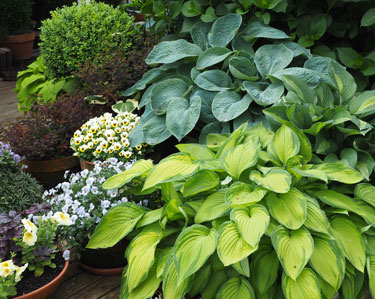
A
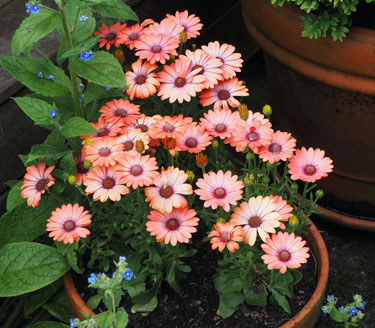
B
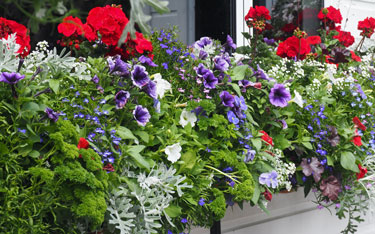
C

D
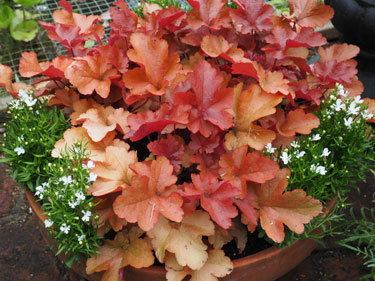
E
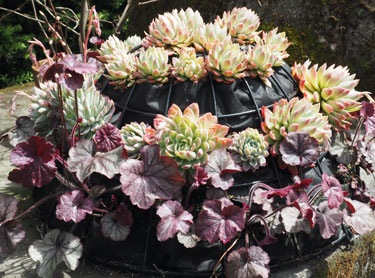
G
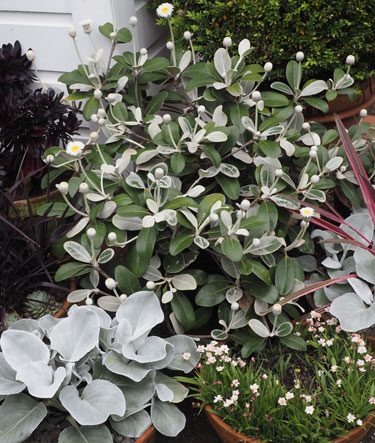
H
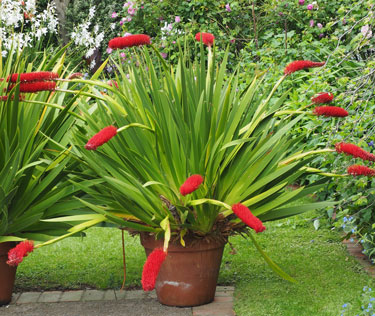
I
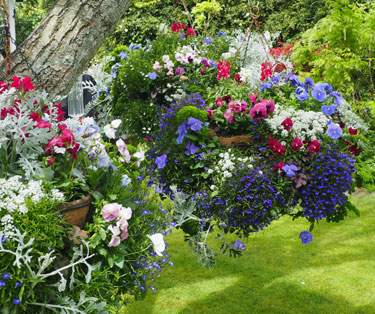
J
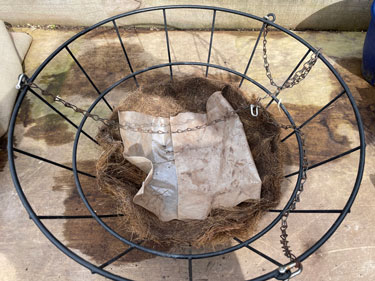
Step 2
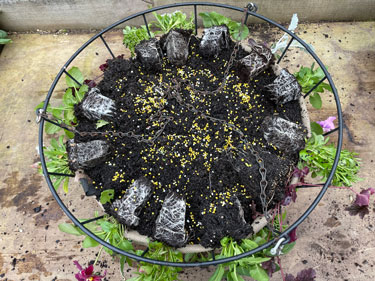
Step 5
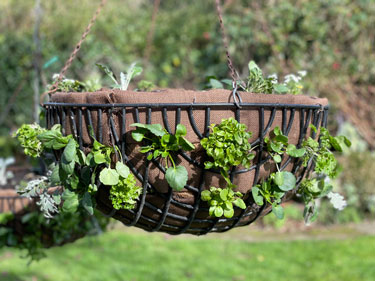
Finished basket

